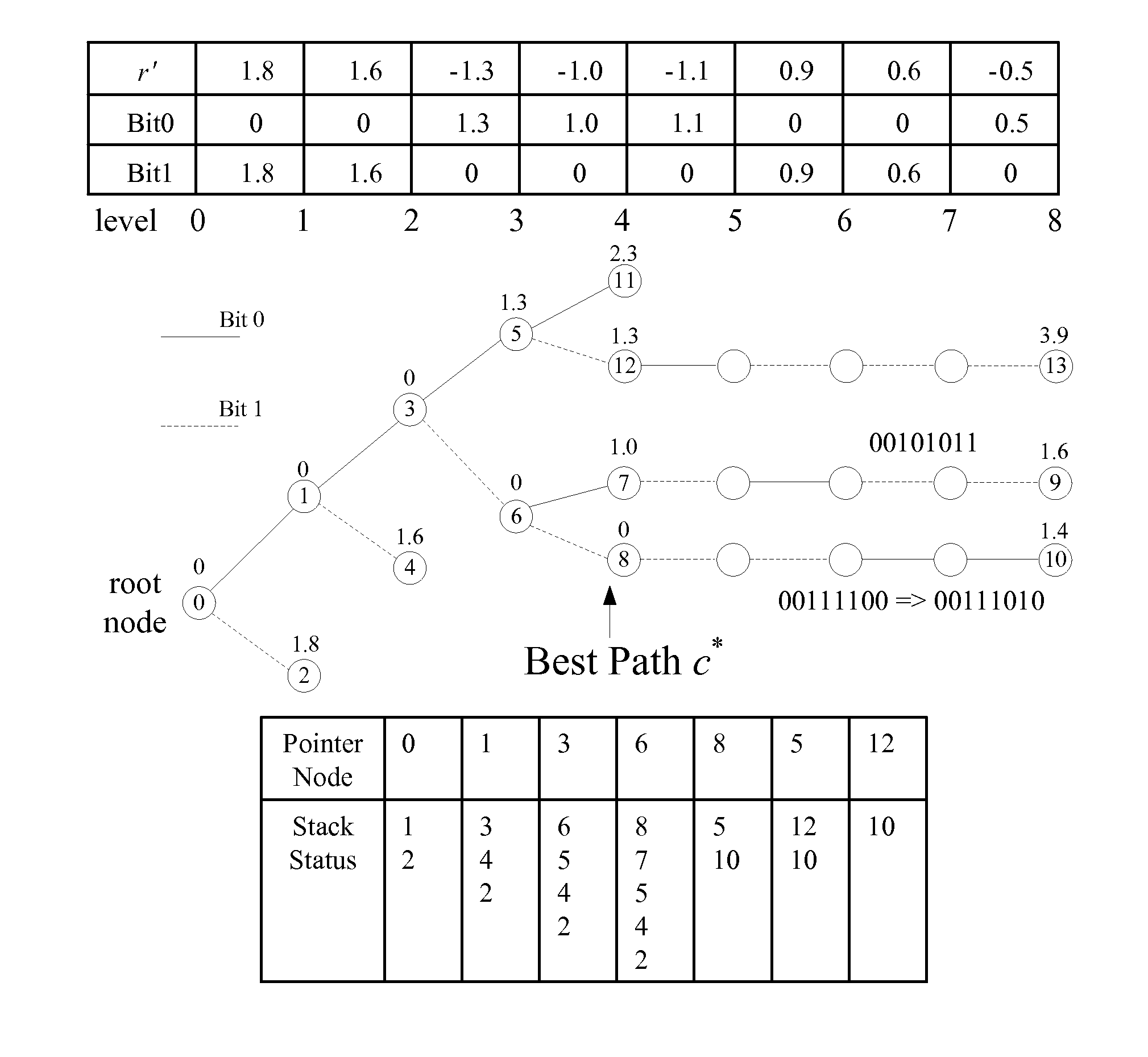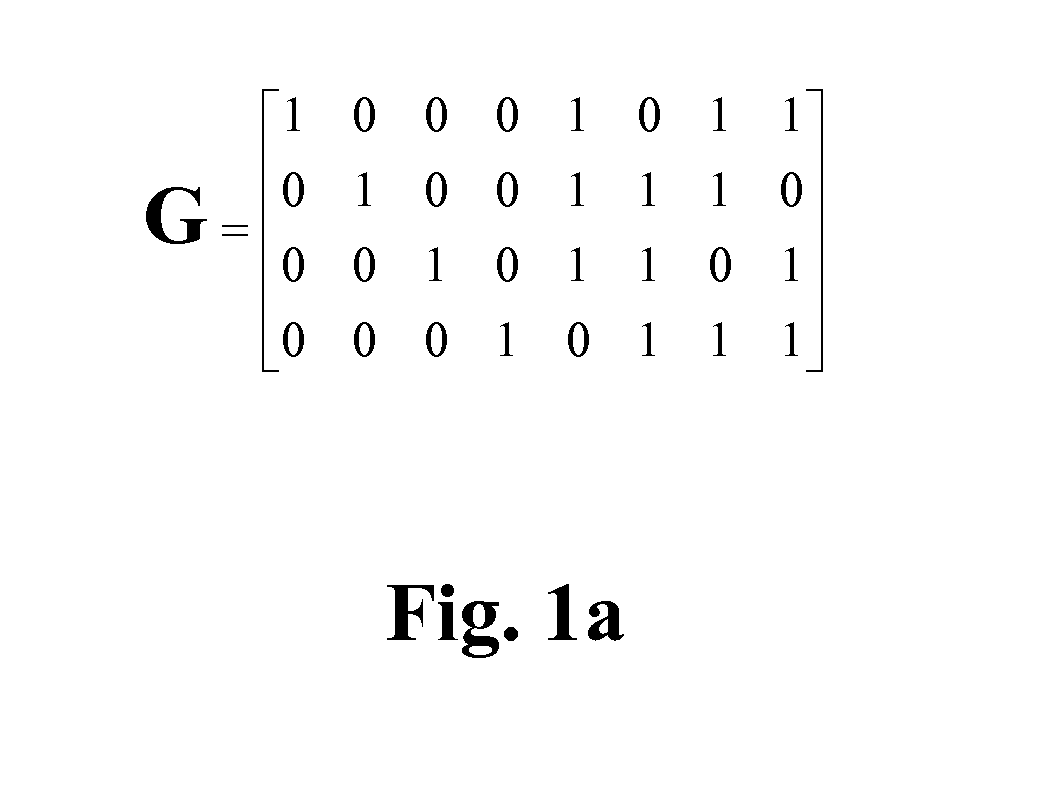Tree decoding method for decoding linear block codes
a decoding method and linear block technology, applied in the field of decoding linear block codes by trees, can solve the problems of reducing decoding complexity and relatively low error rate, and achieve the effect of reducing decoding complexity and low error ra
- Summary
- Abstract
- Description
- Claims
- Application Information
AI Technical Summary
Benefits of technology
Problems solved by technology
Method used
Image
Examples
Embodiment Construction
[0040]The accompanying drawings are included to provide a further understanding of the invention, and are incorporated in and constitute a part of this specification. The drawings illustrate embodiments of the invention and, together with the description, serve to explain the principles of the invention.
[0041]Supposing a node having a code number v, and the estimated path metric of node v is set as f(v)=g(v)+h(v), in which g(v) represents the path metric from the root node to the node v, and h(v) represents an estimation of the best possible accumulated edge metric from the node v to the goal node. In accordance with the present invention, the method of calculating h(v) is very efficient, so as to allow an effective bound on the possible path metrics of all codewords passing through the node v before decoding the entire codeword. In such a way, the useless nodes can be discarded in advance, and the decoding complexity can be reduced.
[0042]FIG. 2a is a schematic diagram illustrating ...
PUM
 Login to View More
Login to View More Abstract
Description
Claims
Application Information
 Login to View More
Login to View More - R&D
- Intellectual Property
- Life Sciences
- Materials
- Tech Scout
- Unparalleled Data Quality
- Higher Quality Content
- 60% Fewer Hallucinations
Browse by: Latest US Patents, China's latest patents, Technical Efficacy Thesaurus, Application Domain, Technology Topic, Popular Technical Reports.
© 2025 PatSnap. All rights reserved.Legal|Privacy policy|Modern Slavery Act Transparency Statement|Sitemap|About US| Contact US: help@patsnap.com



